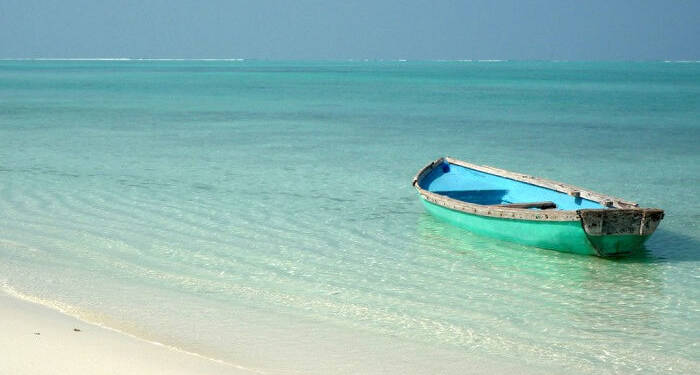The Maldives has emerged as one of the largest tourist hubs with its clear blue waters and mesmerising scenery attracting tourists by the heaps. However, India’s own atolls in the Lakshadweep archipelago can be an alternative to the Maldives when it comes to attracting tourists from around the world. Its unfiltered beauty straddles the same vast marine mountain range as the Maldives and it is much cheaper to travel to Lakshadweep as compared to the Maldives.
Lakshadweep is an archipelago of twelve atolls, three reefs and five submerged banks, with a total of about thirty-nine islands and islets. The reefs are also atolls, although mostly submerged, with only small unvegetated sand cays above the high-water mark. It has ten inhabited islands, 17 uninhabited islands, attached islets, four newly formed islets and five submerged reefs.[13]The main islands are Kavaratti, Agatti, Minicoy, and Amini. The total population of the territory is 60,595 according to the 2001 census. Agatti has an airport with direct flights from Kochi.
While there is unparalleled beauty in Lakshadweep, the fact that consumption of alcohol is banned in the Union Territory desists many tourists especially the foreign tourists from travelling to the archipelago. Modest swimwear is a rule, and the locals also detest drinking and carrying any alcohol offends their sentiments.
Imagine travelling to the ideal warm holiday destination and not finding an alcoholic beverage while at the beach. In order to host tourists from around the world, apart from development reaching its shores, the alcohol ban may need to exit.
Lakshadweep has over 600 species of marine fishes, 78 species of corals, 82 species of seaweed, 52 species of crabs, 2 species of lobsters, 48 species of gastropods, 12 species of bivalves, 101 species of birds. it is one of the four coral reef regions in India. The corals are a major attraction for the tourists and there is a feeling that the Indian government hasn’t realised the full potential of Lakshadweep and hence, not develop it as a tourist hub.
The islands have been fiercely protected by the Indian government and the infrastructure is almost entirely government-run, with a focus on ship-based tourism to relieve pressure on the islands’ limited resources. One needs to acquire various permits to travel to the islands and the laws are strictly enforced and focus on the conservation of natural habitat which is evident from the fact that it is illegal to collect coral of any sort — and you will see heaps of these polyps lying around washed up on shore by the sea, not just underwater. Strict screenings at the airport and harbour, random searches, heavy fines and the possibility of incarceration mean that visitors should take these local laws very seriously.
Lakshadweep’s population remains secluded and the government must help them prosper by developing the region in a sustainable manner. Lakshadweep is famous for its white beaches which are in fact made up of fine coral dust. Lakshadweep has tremendous potential for tourism and must follow the model of the Maldives.
The Maldives has been a developmental success; enjoying robust growth coupled with considerable development of the country’s infrastructure and connectivity. Its real GDP grew by 6.7 per cent in 2018, on the back of strong performance in tourism, construction, and trade. Tourism contributed approximately 2.4 percentage points, followed by transportation and communication (0.7 percentage points) and financial services (0.4 percentage points).
The claims that the Maldives have reached a saturation point when it comes to infrastructure gets more credibility when you consider the fact that construction declined by 23.1 per cent. The opening of new resorts and infrastructure and housing projects have fueled the construction sector over the last 5 years, and the decline in construction reflects the completion of some large infrastructure projects.
There is no doubt that Lakshadweep can emerge as an interesting alternative to the Maldives without burning a hole into the pockets of the tourists. The Indian government has taken the first steps as it has announced that it will now open up 12 islands, as yet off-limits, for tourists. The move is being implemented as part of the Centre’s initiative for the holistic development of islands and will give a leg up to niche tourism in Lakshadweep.
In a significant development, a public-private partnership package has been developed, as part of which the island administration has begun inviting eco-friendly resorts and subs diving centres. The government is expecting investments to the tune of Rs 300 crores after completion of the projects. It seems that there are interesting times up ahead for Lakshadweep.


































